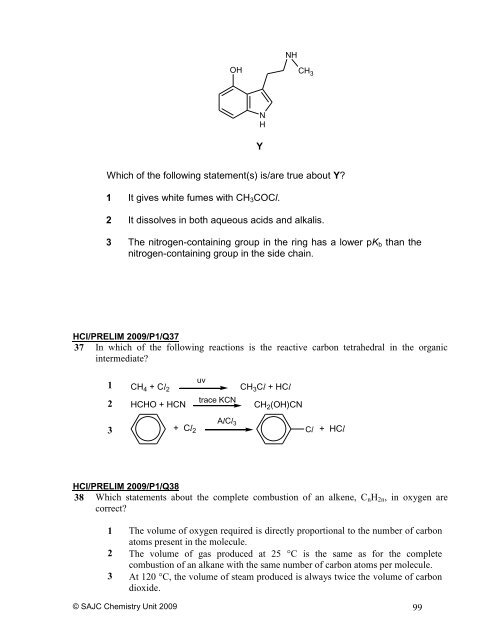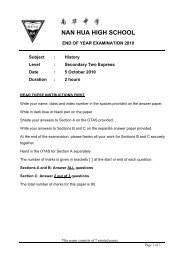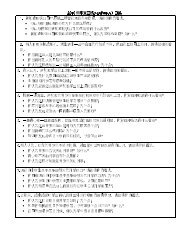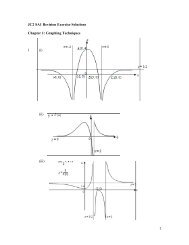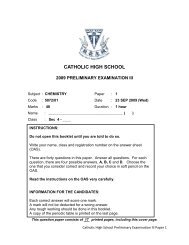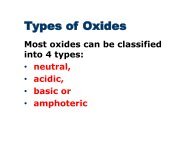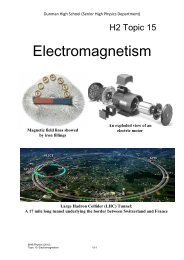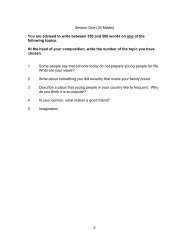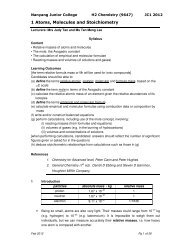Papers included in this bank - ASKnLearn
Papers included in this bank - ASKnLearn
Papers included in this bank - ASKnLearn
- No tags were found...
You also want an ePaper? Increase the reach of your titles
YUMPU automatically turns print PDFs into web optimized ePapers that Google loves.
OHNHCH 3NHYWhich of the follow<strong>in</strong>g statement(s) is/are true about Y?1 It gives white fumes with CH 3 COCl.2 It dissolves <strong>in</strong> both aqueous acids and alkalis.3 The nitrogen-conta<strong>in</strong><strong>in</strong>g group <strong>in</strong> the r<strong>in</strong>g has a lower pK b than thenitrogen-conta<strong>in</strong><strong>in</strong>g group <strong>in</strong> the side cha<strong>in</strong>.HCI/PRELIM 2009/P1/Q3737 In which of the follow<strong>in</strong>g reactions is the reactive carbon tetrahedral <strong>in</strong> the organic<strong>in</strong>termediate?1 CH 4 + Cl 2uv2 HCHO + HCNtrace KCNCH 3 Cl + HClCH 2 (OH)CN3+ Cl 2AlCl 3Cl+ HClHCI/PRELIM 2009/P1/Q3838 Which statements about the complete combustion of an alkene, C n H 2n , <strong>in</strong> oxygen arecorrect?1 The volume of oxygen required is directly proportional to the number of carbonatoms present <strong>in</strong> the molecule.2 The volume of gas produced at 25 C is the same as for the completecombustion of an alkane with the same number of carbon atoms per molecule.3 At 120 C, the volume of steam produced is always twice the volume of carbondioxide.© SAJC Chemistry Unit 2009 99


